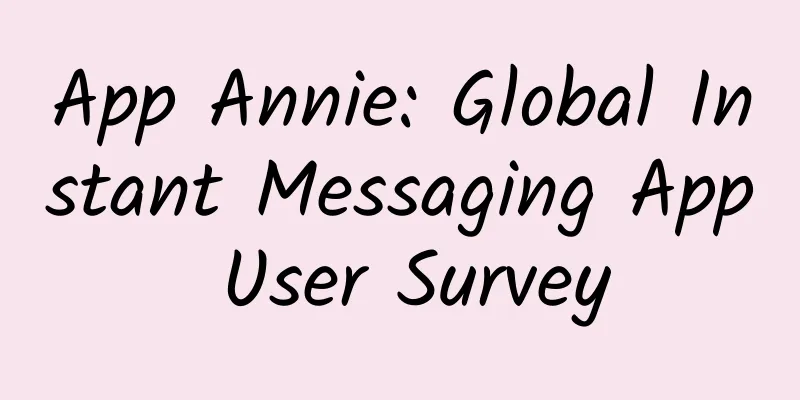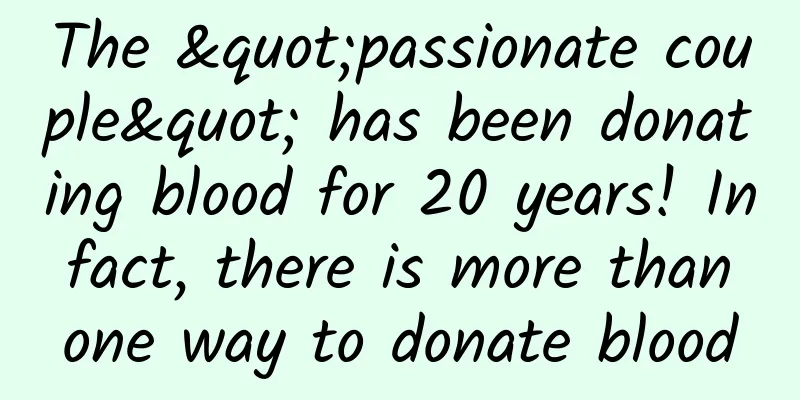App Annie: Global Instant Messaging App User Survey

|
199IT original compilation As applications evolved, one type of application stood out: instant messaging. It was not just a new concept: SMS has been around for more than 20 years, and PC messaging applications such as AOL's AIM and ICQ have been popular since the 1990s. However, the success of Skype promoted the development of IP phone calls, and the launch of modern application markets sowed the seeds for the boom of instant messaging applications, which eventually developed into today's instant messaging applications. However, many instant messaging applications now go far beyond this, attracting a large number of users and extending their functions to transfer money, municipal services, games, business, and more. App Annie Intelligence looked at the messaging apps that are popular across all age groups. Global instant messaging application How popular are messaging apps around the world? Although the penetration rates vary, the Asia-Pacific region is the most widely used. In South Korea and China, more than 90% of iPhone users became active users of messaging apps in early 2014. PS: Instant messaging apps do not include native apps such as Hangouts on Android and Messages on iOS. The United States lags behind Asian countries in the popularity of instant messaging apps. This is mainly due to the popularity of unlimited SMS and native Android and iOS apps in the United States. Moreover, the prevalence of instant messaging apps around the world is mainly due to the high cost of SMS. However, SMS remains popular in the United States, even though instant messaging apps have been working hard to attract consumers. In the United States, the penetration rate of instant messaging apps on iPhone has doubled compared to 2014, especially Facebook Messenger. However, the penetration rate of instant messaging applications is not so high in all countries, and the time spent on instant messaging applications by netizens in different countries is not the same. By December 2015, 90% of Android smartphone users in Malaysia and Japan actively used instant messaging applications; however, Malaysian users spent nearly an hour using instant messaging applications every day, while Japanese users spent twice as much as Malaysian users. The differences in instant messaging usage across countries show that the functionality of instant messaging apps varies greatly across countries. In the Asia-Pacific region, the model of messaging as a platform is very popular, while in Western countries, instant messaging apps are still focused on communication. Asian instant messaging apps like WeChat and LINE offer a range of services to attract consumers and meet their needs and preferences. In Western countries, instant messaging apps are still lagging behind in integrating multiple services. However, Facebook's instant messaging platform has taken the first step in closing this gap. And this trend of extended functionality will continue in the coming years as consumer preferences and expectations evolve. App Annie has predicted in its report that Facebook will add payment functionality and extend B2C services. It is expected that usage by young users will lead this change, as young users are always early adopters of new technologies. We believe that instant messaging applications that offer a variety of services around messaging functions will be warmly welcomed by consumers under the age of 25. We also surveyed Lyft users in the US (iPhone) to understand the behavior patterns of instant messaging app users. In December 2015, Lyft users in the US were more willing to use the enterprise communication app Slack than the average iPhone user (7 times), which shows that there are more professionals among Lyft users. Uber users are also more willing to use Slack than the average person (4 times), although not as enthusiastic as Lyft users. Another interesting example is Airbnb users in the US (based on iPhone), who are more willing to use WeChat (3 times) and WhatsApp Messenger (2 times) than the average person. Understanding this is increasingly important for publishers, advertisers, and other stakeholders. In the case of messaging apps and their edge services, understanding the overlap between these apps can provide lucrative opportunities, such as the recent partnership between Uber and Facebook that allows users to order on Facebook Messenger. As expected: Young people spend the most time chatting In 2015, the average UK user used instant messaging apps 13 times a day, and users aged 13 to 24 used them four times more than those aged 45 and above. 199IT.com Originally compiled from: App Annie. Please do not reprint without authorization |
<<: IHS: China's 4G smartphone shipments are expected to grow 15 times in 2014
>>: 6 kinds of "aging agents" hidden in food, please keep this "forbidden food list"!
Recommend
What is the reason for the slight pain in the left kidney of a woman
The kidneys are important organs in the human bod...
Minimally invasive surgery for pelvic cysts
Pelvic cyst is a very common gynecological diseas...
How long after miscarriage is it best to eat fish maw
If there is no other discomfort within 24 hours a...
Is drinking barley tea effective for weaning?
It is reasonable to drink barley tea at home, but...
What should I do if my menstrual flow is light?
Many women experience scanty menstruation. The de...
What are the vaginal sphincter exercises?
Exercise is indispensable in life, and we also do...
Cervical leep knife_Cervical leep knife
Cervical erosion is mainly caused by not paying a...
Joint pain three months after delivery
Many mothers will feel pain in their joints three...
Can I hula hoop during my period?
Women can do some simple exercises during menstru...
Is it better for women to have thick lips or thin lips?
Some people say that thin lips are better because...
What are the effects of mastectomy?
Breasts are a symbol of women. They are not only ...
Infonetics: Global telecom wireless equipment market forecast to reach $3.9 billion in 2017
The latest research from market research firm Inf...
What kind of person is Guan Yu in the Romance of the Three Kingdoms? What is the ending of the Romance of the Three Kingdoms?
The Romance of the Three Kingdoms uses characters...
What are the ways for girls to maintain their appearance?
Everyone knows that women are the most beauty-lov...
What is the effect of massage during menstruation
You must be careful during your menstrual period....









